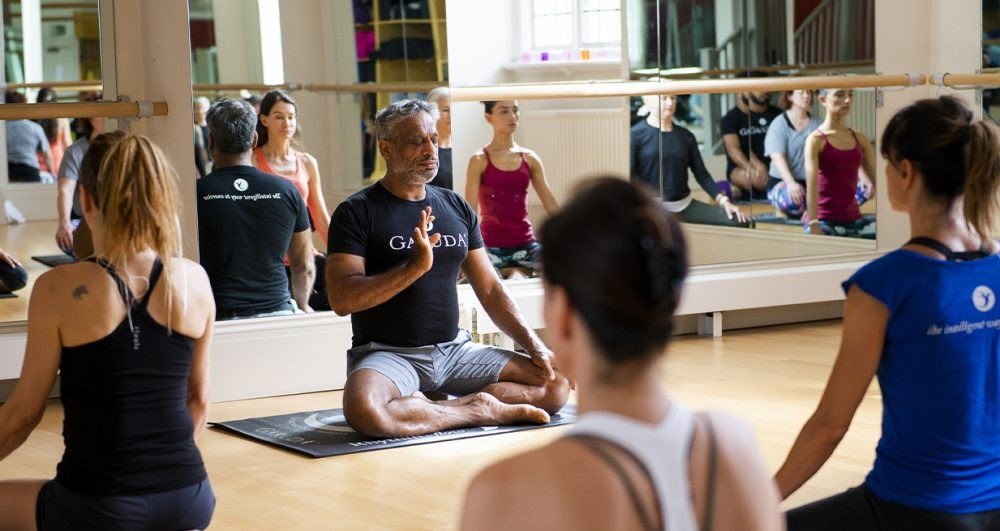November 23, 2020
The Ultimate Guide to Pranayama Breathing

What is Pranayama?
The word Pranayama comes from the Sanskrit words of ‘Prana’ which means life energy, and ‘Yama’ which means control. Pranayama refers to the practice of breath regulation and is one of the main components of Yoga practice.
Pranayama is an ancient practice that is carried out by a variety of breathing techniques and exercises. Regardless of the Pranayama technique, there are always three main stages:
- Purak (Inhalation through nostrils)
- Kumbhak (Retention)
- Rechak (Exhalation)
The ultimate goal of pranayama is to connect the body and mind by supplying your body with oxygen to remove toxins, which has proven physiological benefits.
Common Techniques of Pranayama
Overall, there are many different types of Pranayama breathing techniques, but here are some of the most popular exercises for beginners.
Dirga Pranayama ‘Three-Part Breath’
This technique got its name from how it is practised. When you perform Dirga you are actively breathing into three different parts of the abdomen.
It is performed by laying on your back, filling your belly, rib cage and chest with a large amount of air and then releasing the air slowly from your chest, to your rib cage and finally your belly. This is repeated for another 10-20 breaths.
This is a great breathing introduction for beginners to Pranayama as it gets you used to filling up your lungs and practising meditative breathing.
Nadi Sodhana ‘Alternate Nostril Breathing’
This ‘Alternate Nostril Breathing’ technique is probably the most well-known amongst the Pranayama community and the most popular too.
It is performed by using your right hand to close your right nostril, inhale deeply with the left nostril, close your left nostril, open the right nostril and exhale completely. This process is repeated around 10 times.
This Pranayama helps bring balance to the three doshas of the human experience: the mind, body and soul.
Shitali Pranayama ‘Cooling Breath’
The ‘Cooling Breath’ technique is a refreshing exercise that practitioners tend to perform more during summer months to cool down. Research has also shown that when this is practised during Yoga, the cooling breath can help reduce anxiety.
It is performed by rolling your tongue into an O shape, sticking it through pursed lips, slowly inhale through the mouth, hold your breath and practice Jalandhar Bandh, which is a type of chin lock. After this, you exhale through your nostrils after some time. This is repeated up to 15 times.
Understanding the benefits
Improves Sleep Quality
In the Pranayama technique called ‘Bhramari Pranayama’, the slow breathing that this exercise generates helps to slow down the heart rate when practised for 5 minutes – creating the perfect mood for sleep.
Reduces stress
In 2013, a study was carried out on the effects of pranayama breathing on young health care students. The results included a significant decrease in stress levels amongst the group of 18 – 25-year-olds.
Another test was carried out on its effect on student’s preparation for an exam and actually taking it. All results conveyed that it has a positive effect which lowered the student’s anxieties before the exam and even increased their performance.
Boosts Immune System
Pranayama, but more specifically the Bhramari technique, can actually enhance and stimulate the immune system.
Our cells cannot regenerate without oxygen. Breathing is the fastest and most efficient way for our bodies to get oxygen. The deep breathing helps our immune system regenerate cells in order to fight infection or disease.
Reduces high blood pressure
In a 2014 study, half the participants with high blood pressure received antihypertensive drugs for 6 weeks and the other half received pranayama training for 6 weeks. By the end of the study, the Pranayama group experienced a greater reduction in blood pressure.
Want to learn more about Pranayama?
Pranayama has an ancient history and is one of the eight limbs of yoga, which is described as guidelines on how to live a meaningful and purposeful life. So if you are interested in Yoga, Pilates and the Garuda technique, then learning more about Pranayama will benefit you a lot.
If you want to learn more about Pranayama and how it can be incorporated into the Garuda technique, please contact us.
Interested in learning the Garuda Method? Check out our academy.